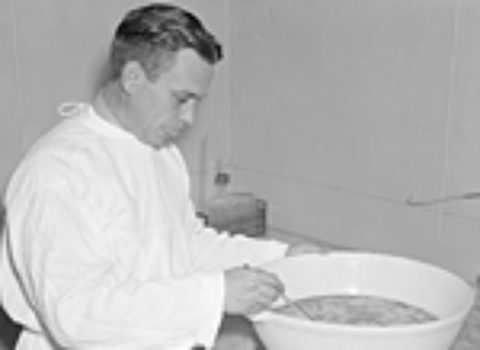The Class Politics of Vaccination
“Debates over vaccination, then as now, were often cast as debates over the integrity of science, though they could just as easily be understood as conversations about power.”
The belief that public-health measures are not intended for people like us is widely held by people like me. Public health, we assume, is for people with less — less education, less healthy habits, less access to quality health care, less time and money. I’ve heard mothers of my class suggest, for instance, that the standard childhood vaccination schedule groups together multiple shots because poor mothers can’t visit the doctor frequently enough to get the twenty-six recommended shots separately. (No matter that many mothers, myself included, might find so many visits daunting.) That, we seem to be saying of the standard schedule, is for people like them.
When the last nationwide smallpox epidemic began in 1898, some people believed that whites were not susceptible to the disease. It was called “nigger itch” or, where it was associated with immigrants, “Italian itch” or “Mexican bump.” When smallpox broke out in New York City, police officers were sent to help enforce the vaccination of Italian and Irish immigrants in the tenements. And when smallpox arrived in Middlesboro, Kentucky, everyone in the black section of town who resisted immunization was vaccinated at gunpoint. These campaigns did limit the spread of the disease, but most of the risk of vaccination, which at that time could lead to infection with other diseases, was absorbed by the most vulnerable. The poor were forced into the service of the privileged.
Debates over vaccination, then as now, were often cast as debates over the integrity of science, though they could just as easily be understood as conversations about power. The working-class people who resisted England’s 1853 provision of free, mandatory vaccination were concerned, in part, for their own liberty. Faced with fines, imprisonment, and the seizure of their property if they did not vaccinate their infants, they sometimes compared their predicament to slavery. In her history of that antivaccination movement, Nadja Durbach returns often to the idea that the resisters saw their bodies “not as potentially contagious and thus dangerous to the social body, but as highly vulnerable to contamination and violation.” Their bodies were, of course, both vulnerable and contagious. But in a time and place where the bodies of the poor were seen as a source of disease, as dangerous to others, it fell to the poor to articulate that they were also vulnerable.
If it was meaningful then for the poor to assert that they were not purely dangerous, I suspect it might be just as meaningful now for the rest of us to accept that we are not purely vulnerable. The middle class may be “threatened,” but we are still, just by virtue of having bodies, dangerous. Even the little bodies of children, which nearly all the thinking common to our time encourages us to imagine as absolutely vulnerable, are dangerous in their ability to spread disease. Think of the unvaccinated boy in San Diego, for instance, who returned from a trip to Switzerland with a case of measles that infected his two siblings, five schoolmates, and four children in his doctor’s waiting room. Three of these children were infants too young to be vaccinated, and one of them had to be hospitalized.
Unvaccinated children, according to a 2004 analysis of CDC data, are more likely than undervaccinated children to be white and to live in households with an income of $75,000 or more — like my child. Their mothers are more likely to be, like me, married and college-educated. Undervaccinated children, meaning children who have received some but not all of their recommended immunizations, are more likely to be black, to have younger, unmarried mothers, and to live in poverty.
“Vaccination works,” my father, a doctor, tells me, “by enlisting a majority in the protection of a minority.” He means the minority of the population that is particularly vulnerable to a disease. The elderly, in the case of influenza. Newborns, in the case of pertussis. Pregnant women, in the case of rubella. When relatively wealthy white women choose to vaccinate our children, we may also be participating in the protection of poor black children whose single mothers have not, as a result of circumstance rather than choice, fully vaccinated them. This is a radical inversion of the historical approach to vaccination, which was once just another form of bodily servitude extracted from the poor for the benefit of the privileged. There is some truth now to the idea that public health is not strictly for people like me, but it is through us — literally through our bodies — that public health is maintained.






